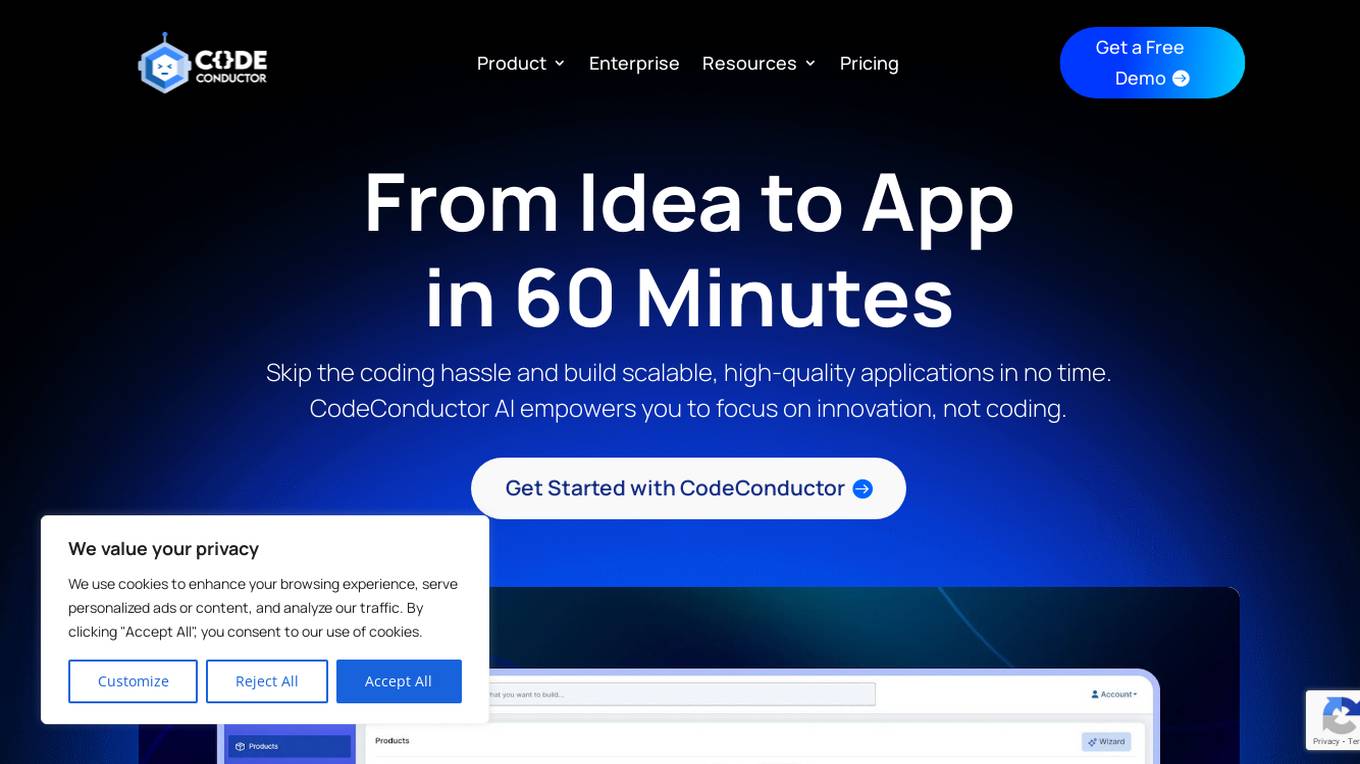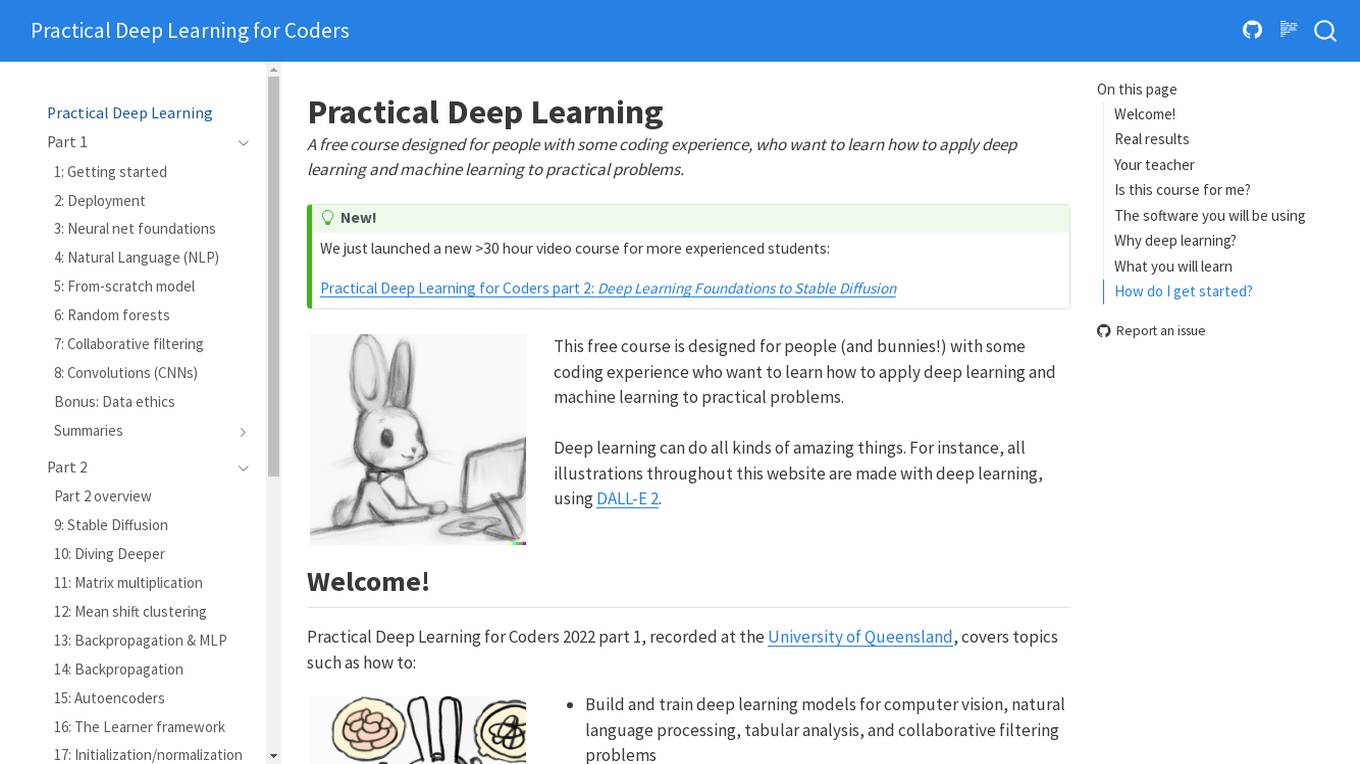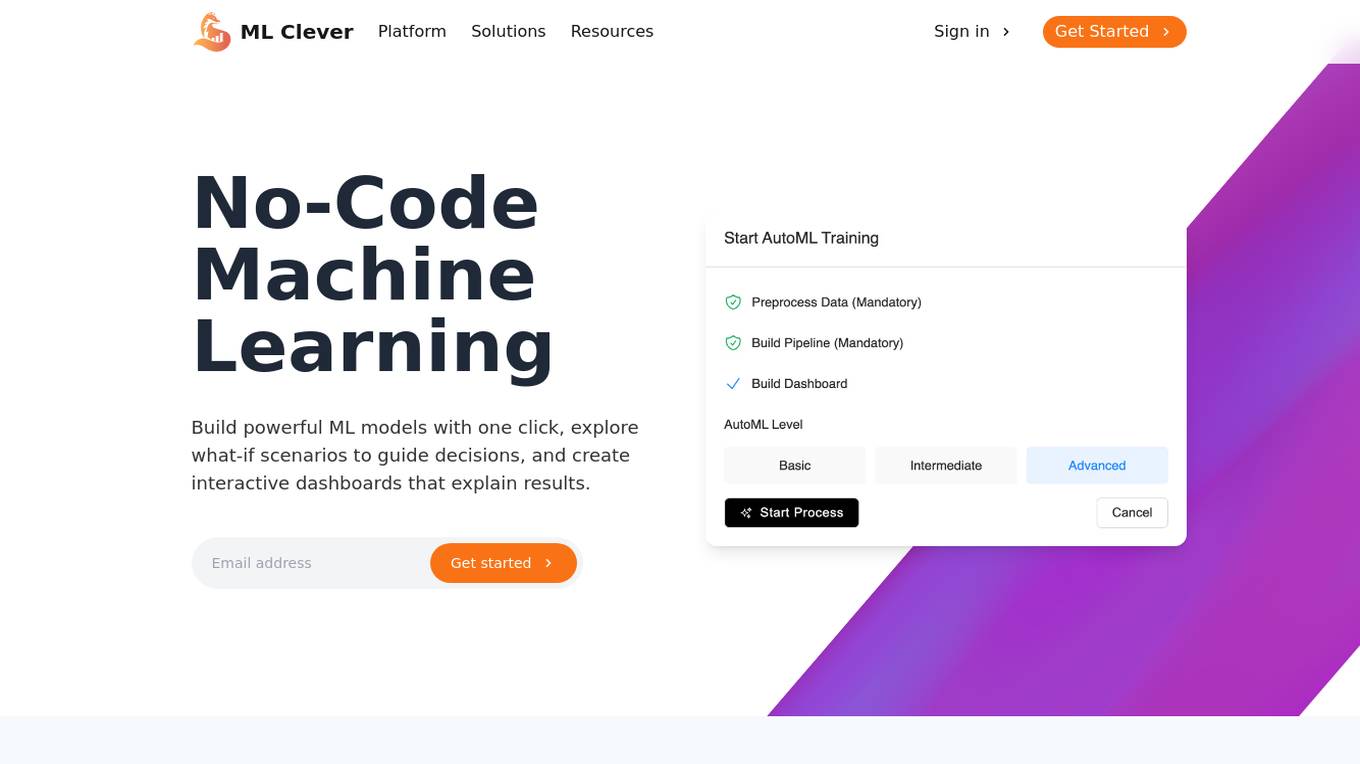Best AI tools for< Deploy Code >
20 - AI tool Sites

Shipixen
Shipixen is an AI-powered tool that allows users to generate custom Next.js codebases with an MDX blog, TypeScript, and Shadcn UI in minutes. It provides a seamless experience for developers to create beautifully designed SaaS, blogs, landing pages, directories, and more without the hassle of manual setup. Shipixen offers a wide range of features, themes, and components to streamline the web development process and empower users to focus on building rather than configuring. With AI content generation capabilities, customizable branding, and easy deployment options, Shipixen is a valuable tool for both beginners and experienced developers.

AICommit
AICommit is an AI-powered programming assistant for JetBrains IDEs. It is based on OpenAI GPT and provides a range of intelligent coding features, including automated commit message generation, code optimization, code interpretation, documentation generation, code conversion, and translation. AICommit can help you make your coding process more efficient and convenient.

Contentable.ai
Contentable.ai is a platform for comparing multiple AI models, rapidly moving from prototyping to production, and management of your custom AI solutions across multiple vendors. It allows users to test multiple AI models in seconds, compare models side-by-side across top AI providers, collaborate on AI models with their team seamlessly, design complex AI workflows without coding, and pay as they go.

NOCODING AI
NOCODING AI is an innovative AI tool that allows users to create advanced applications without the need for coding skills. The platform offers a user-friendly interface with drag-and-drop functionality, making it easy for individuals and businesses to develop custom solutions. With NOCODING AI, users can build chatbots, automate workflows, analyze data, and more, all without writing a single line of code. The tool leverages machine learning algorithms to streamline the development process and empower users to bring their ideas to life quickly and efficiently.

Stately
Stately is a visual logic builder that enables users to create complex logic diagrams and code in minutes. It provides a drag-and-drop editor that brings together contributors of all backgrounds, allowing them to collaborate on code, diagrams, documentation, and test generation in one place. Stately also integrates with AI to assist in each phase of the development process, from scaffolding behavior and suggesting variants to turning up edge cases and even writing code. Additionally, Stately offers bidirectional updates between code and visualization, allowing users to use the tools that make them most productive. It also provides integrations with popular frameworks such as React, Vue, and Svelte, and supports event-driven programming, state machines, statecharts, and the actor model for handling even the most complex logic in predictable, robust, and visual ways.

CodeConductor
CodeConductor is a no-code AI software development platform that empowers users to build scalable, high-quality applications without the need for extensive coding. The platform streamlines the app development process, allowing users to focus on innovation and customization. With features like accelerated app development, complete customization control, intelligent feature suggestions, dynamic data modeling, and seamless CI/CD & auto-scaled hosting, CodeConductor offers a user-friendly and efficient solution for creating web and mobile applications. The platform also provides enterprise-grade security, robust deployment options, and transparent code history tracking.

Vossle
Vossle is an AI-powered cloud-based SaaS platform for businesses and agencies to create web-based augmented reality experiences. Reach millions of users instantly with App-less Augmented Reality (WebAR) Experience that works on every modern smartphone browser the moment you publish! No app installs are required! No need to write a line of code or to develop costly apps. Build immersive AR experiences without installing any apps.

Practical Deep Learning for Coders
Practical Deep Learning for Coders is a free course designed for individuals with some coding experience who want to learn how to apply deep learning and machine learning to practical problems. The course covers topics such as building and training deep learning models for computer vision, natural language processing, tabular analysis, and collaborative filtering problems. It is based on a 5-star rated book and does not require any special hardware or software. The course is led by Jeremy Howard, a renowned expert in machine learning and the President and Chief Scientist of Kaggle.

Vapi
Vapi is a Voice AI tool designed specifically for developers. It enables developers to interact with their code using voice commands, making the coding process more efficient and hands-free. With Vapi, developers can perform various tasks such as writing code, debugging, and running tests simply by speaking. The tool is equipped with advanced natural language processing capabilities to accurately interpret and execute voice commands. Vapi aims to revolutionize the way developers work by providing a seamless and intuitive coding experience.

Liner.ai
Liner is a free and easy-to-use tool that allows users to train machine learning models without writing any code. It provides a user-friendly interface that guides users through the process of importing data, selecting a model, and training the model. Liner also offers a variety of pre-trained models that can be used for common tasks such as image classification, text classification, and object detection. With Liner, users can quickly and easily create and deploy machine learning applications without the need for specialized knowledge or expertise.

Codenull.ai
Codenull.ai is a no-code AI platform that allows users to build and train AI models without writing any code. The platform provides a variety of pre-built AI models that can be used for a variety of tasks, including portfolio optimization, fraud detection, and customer acquisition. Codenull.ai also provides a user-friendly interface that makes it easy to train and deploy AI models.

ML Clever
ML Clever is a no-code machine learning platform that empowers users to build powerful ML models with one click, explore what-if scenarios to guide decisions, and create interactive dashboards to explain results. It combines automated machine learning, interactive dashboards, and flexible prediction tools in one platform, allowing users to transform data into business insights without the need for data scientists or coding skills.

PixieBrix
PixieBrix is an AI engagement platform that allows users to build, deploy, and manage internal AI tools to drive team productivity. It unifies AI landscapes with oversight and governance for enterprise scale. The platform is enterprise-ready and fully customizable to meet unique needs, and can be deployed on any site, making it easy to integrate into existing systems. PixieBrix leverages the power of AI and automation to harness the latest technology to streamline workflows and take productivity to new heights.

Trae
Trae is an adaptive AI IDE that aims to help users ship faster by transforming the way they work. It collaborates with users to enhance productivity and efficiency. The platform provides a range of features to streamline the development process and improve overall workflow.

Datature
Datature is an all-in-one platform for building and deploying computer vision models. It provides tools for data management, annotation, training, and deployment, making it easy to develop and implement computer vision solutions. Datature is used by a variety of industries, including healthcare, retail, manufacturing, and agriculture.

Lightup
Lightup is a cloud data quality monitoring tool with AI-powered anomaly detection, incident alerts, and data remediation capabilities for modern enterprise data stacks. It specializes in helping large organizations implement successful and sustainable data quality programs quickly and easily. Lightup's pushdown architecture allows for monitoring data content at massive scale without moving or copying data, providing extreme scalability and optimal automation. The tool empowers business users with democratized data quality checks and enables automatic fixing of bad data at enterprise scale.

Site Not Found
The website page seems to be a placeholder or error page with the message 'Site Not Found'. It indicates that the user may not have deployed an app yet or may have an empty directory. The page suggests referring to hosting documentation to deploy the first app. The site appears to be under construction or experiencing technical issues.

Code Companion AI
Code Companion AI is a desktop application powered by OpenAI's ChatGPT, designed to aid by performing a myriad of coding tasks. This application streamlines project management with its chatbot interface that can execute shell commands, generate code, handle database queries and review your existing code. Tasks are as simple as sending a message - you could request creation of a .gitignore file, or deploy an app on AWS, and CodeCompanion.AI does it for you. Simply download CodeCompanion.AI from the website to enjoy all features across various programming languages and platforms.

Glide
Glide is an AI-powered no code app builder that helps businesses create custom tools for a faster, more efficient way to work without the need for coding. It allows users to transform time-consuming processes into modern, interactive apps, tailored to their needs in weeks. Glide aims to future-proof businesses by automating tasks and enhancing productivity with a modern mobile experience. The platform has been used by over 100,000 companies to create custom apps, offering custom development without the headaches.

FlutterFlow
FlutterFlow is a low-code development platform that enables users to build cross-platform mobile and web applications without writing code. It provides a visual interface for designing user interfaces, connecting data, and implementing complex logic. FlutterFlow is trusted by users at leading companies around the world and has been used to build a wide range of applications, from simple prototypes to complex enterprise solutions.
2 - Open Source AI Tools

code-companion
CodeCompanion.AI is an AI coding assistant desktop app that helps with various coding tasks. It features an interactive chat interface, file system operations, web search capabilities, semantic code search, a fully functional terminal, code preview and approval, unlimited context window, dynamic context management, and more. Users can save chat conversations and set custom instructions per project.

starter-monorepo
Starter Monorepo is a template repository for setting up a monorepo structure in your project. It provides a basic setup with configurations for managing multiple packages within a single repository. This template includes tools for package management, versioning, testing, and deployment. By using this template, you can streamline your development process, improve code sharing, and simplify dependency management across your project. Whether you are working on a small project or a large-scale application, Starter Monorepo can help you organize your codebase efficiently and enhance collaboration among team members.
16 - OpenAI Gpts

Gary Marcus AI Critic Simulator
Humorous AI critic known for skepticism, contradictory arguments, and combining Animal and Machine Learning related Terms.

DevOps Mentor
A formal, expert guide for DevOps pros advancing their skills. Your DevOps GYM
ReScript
Write ReScript code. Trained with versions 10 & 11. Documentation github.com/guillempuche/gpt-rescript












